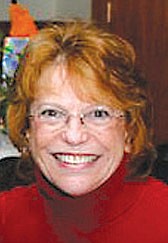No doubt about it, head lice are a nuisance
My sister-in-law used to dread her daughter going back to school. Not because she wasn’t happy to get her out of the house, but because my niece came home with head lice several years in a row.
Pediculosis, which is big talk for a louse infestation, dates back to prehistory. According to Emedicine.medscape.com, “The oldest known fossils of louse eggs (i.e., nits) are approximately 10,000 years old.”
Not surprisingly, words like “lousy” and “nit-picking” come from pediculosis, as does the expression “going over things with a fine-tooth comb.” Although they are a nuisance, lice don’t cause serious illnesses or carry any diseases. They’re found all over the world.
“Different species of lice prefer to feed on certain locations on the body of the host. Louse species include Pediculus capitis (head lice and our subject today), Pediculus corporis (body lice), and Pthirus pubis (pubic lice, sometimes called ‘crabs’),” Emedicine says.
More than a million pre-school and elementary school children will come home with head lice this year. However, older children and adults can get them as well.
“Lice feed on human blood after piercing the skin and injecting saliva, which may cause pruritus (itchy skin) due to an allergic reaction,” Emedicine says. “Lice crawl; they do not have wings and cannot fly or hop.”
Healthychildren.org says, “The main way head lice spread is from close, prolonged head-to-head contact. There is a very small chance that head lice will spread by sharing items such as combs, brushes, and hats.
So, what are they exactly? They’re tiny bugs, usually pale and gray, about the size of a sesame seed. They feed on small amounts of blood from the scalp and live one to two days without a blood meal.
“Lice lay and attach their eggs to hair close to the scalp. The eggs and their shell casings are called nits. They are oval and about the size of a knot in the thread, and usually yellow to white. Some nits may blend in with some people’s hair color, making them hard to see, and are often confused for dandruff or hair spray droplets. Nits attach to the hair with a sticky substance that holds them firmly in place. After the eggs hatch, the empty nits stay on the hair shaft,” Healthychildren.org explains.
The nymph looks like an adult louse but is much smaller, as in no bigger than the head of a pin. They become adults around a week after hatching. It only takes around twelve to fourteen days for the nymph to mature to an adult louse who can lay about ten eggs a day.
If you find your child scratching their head, you’ll want to check for head lice. If you’re my sister-in-law, you will check every day throughout the school year. Healthychildren.org says to:
Seat your child in a brightly lit room; part the hair; look for crawling lice and nits on your child’s scalp a section at a time. Live lice are hard to find. They avoid light and move quickly.
“Nits will look like small white or yellow-brown specks and be firmly attached to the hair near the scalp. The easiest place to find them is at the hairline at the back of the neck or behind the ears. Use a fine-tooth comb to help you search the scalp section by section.”
There are many products on the market, and a whole lot of old wives tales, aimed at eliminating head lice. However, if you find lice on your child, your first step is to call your pediatrician for reliable, safe advice.
The second step is to prevent them from spreading to other family members. Since lice don’t jump or fly, avoid hugging or close contact with the child. Even though it’s not necessary to disinfect the whole house, you should wash hats, pillowcases, and any other items with which their head was in contact.
Healthychildren.org offers this warning: “Never use dangerous products like gasoline or kerosene or medicines made for use on animals! Also, do not use home remedies, such as petroleum jelly, mayonnaise, tub margarine, herbal oils, or olive oil, because no studies prove they work.”
Kathy Hubbard is a member of Bonner General Health Foundation Advisory Council. She can be reached at kathyleehubbard@yahoo.com.



